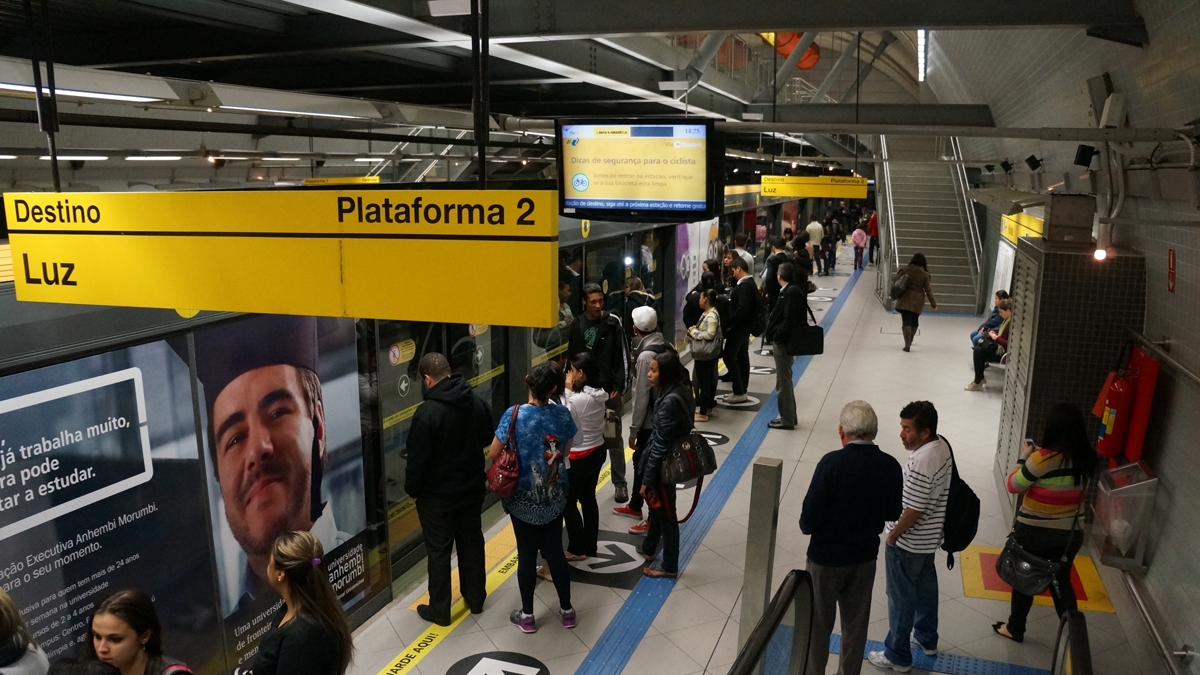Inappropriate touching, penetrating stares, lewd gestures or comments. A sense of powerlessness before the perpetrators. These are everyday experiences for millions of women who use public transportation in Latin America, where sexual harassment is a major problem, in some cases affecting more than half of female bus or subway users.
“I was traveling on the train in Buenos Aires when I felt someone touching me – at rush hour, people are very close together – and I immediately moved away. I didn’t have the courage to tell that person that he was acting inappropriately. I felt ashamed and got off the train,” said 30-year-old Victoria in the Argentine capital.
"Sometimes on the subway, there are annoying stares; it’s uncomfortable,” says 25-year-old Beatriz Gómez in Mexico City. María de los Ángeles, Beatriz’s co-worker, says that “when (the Metrobus) is crowded, they sometimes wear a backpack and touch you.”
Data reveal that these testimonies are not simply anecdotes but rather a daily reality: in Mexico City, 65 percent of women have been victims of some type of gender violence on public transportation or at mass transport stops, terminals or platforms, according to government figures.
It is a reality repeated in other countries of the region. A survey by the non-governmental organization Action Aid in four Brazilian states revealed that 44% of women had suffered sexual harassment on public transportation.
In the first eight months of 2014, 129 people have been arrested for this type of conduct on mass transport systems in Bogota, Colombia, according to police records.
“Nevertheless, only a fraction of these events are reported, which suggests that the real percentage could be much higher,” said Shomik Mehndiratta, transportation expert at the World Bank, in reference to the statistics provided by Mexican authorities.
“For women only”
To address incidents of harassment and even rape on Mexico City’s subway, several years ago, authorities began to reserve the first cars exclusively for women during rush hour. There are barricades on the platform to mark off the area, with signs that read: “for women and children only.”
On the Metrobus, the bus system in the Mexican capital, women board at the front of the bus and wait in special areas at the bus stops. The city’s public transportation network also has a pink bus service which men cannot ride.
Nevertheless, the experts believe that this segregation on public transportation is not sustainable and call for efforts to modify behaviors in the long term. Additionally, no such controls exist on Mexico City’s microbuses.
Other countries facing the same problem are also taking action. In Brazil, the House of Representatives is analyzing draft legislation that could penalize sexual harassment on public transportation with fines and even jail terms.
In Bogota, undercover female police officers patrol the Transmilenio buses to alert authorities on incidents of sexual harassment and if possible, to capture the offenders on the transport unit.
Campaigns and apps against harassment
The World Bank and local organizations are developing a pilot program to implement effective measures to combat the problem of sexual harassment on public transportation and mass transport stops in Latin America.
Preliminary research identified four common denominators in interviews with users and public transport officials:
- Reporting is not easy: there is an overall sense that it is not worth reporting incidents because it is a complicated procedure that almost never produces results.
- There is little solidarity among strangers: if there were more of a sense of community, people would speak up when an incident occurs and would be more likely to support victims.
- Segregation is not enough: many users consider segregation a stopgap measure that does not address inappropriate behavior. Some even believe that it is another way to victimize women since it suggests that they “choose” to subject themselves to harassment if they do not travel in the women’s sections.
- Improved infrastructure = more security: participants feel safer when stations and platforms are in good condition.
Based on these results, experts recommend several measures to address the problem.
These include a public awareness campaign to encourage users to join forces against perpetrators, and new services to make users feel safer (for example, night buses that go to users’ houses, in the manner of the San Francisco system). Recommendations also include the development of mobile apps to report harassment, seek help or information.
“These applications should be available for regular cell phones in order to reach more people,” says Mehndiratta. She cites the example of the Cairo Harassmap, which creates an interactive map of locations where harassment has been reported.

